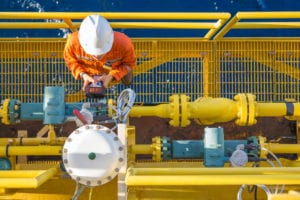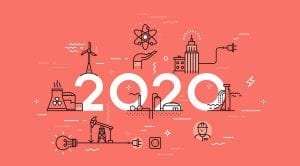Emerging Technologies in Oil and Gas: 4 Trends
Recently, we had the pleasure of sponsoring the Emerging Computing Technologies in Oil & Gas event in Houston. Our team was among the nearly 100 industry professionals from companies like Chevron, ExxonMobil, Citgo, Halliburton (a Parsable customer) and more who discussed ways that new technologies – and the data that they capture – can improve operational and resource efficiency, safety, and scalability. Topics included edge computing, edge devices, digital twins and high-performance computing (HPC).
What does a connected worker have to do with all of this data being generated from the millions of wellsites around the world? Everything.
Mark Zajac, Operations Management System Manager at Schlumberger (another Parsable customer) spoke at the event about how Schlumberger has experienced a massive uptick in reliability. Technology in a silo won’t solve anything, he said; it’s bringing technology together with the workflows, processes and people that makes things really work
“By introducing a number of changes to process – standard processes, standard work, delivery of digital execution, monitoring performance by individuals and by specific work instructions, collecting [data] and feeding it back into the system – we’re able to drive improvement to the organization.” – Mark Zajac, Operations Management System Manager, Schlumberger
Throughout the two days, a few core themes stood out:
The scalability of your emerging tech project defines whether your initiative is just an innovative solution to a problem, or a transformative competitive advantage
The earlier you start thinking through how your project could be systematically adopted in multiple locations or use cases, the less rework you will be confronted with later. Think beyond the technology; understand that adoption is reliant on the human workforce surrounding it.
The more connected your workforce is to each other and the business, the easier it is to scale new technology initiatives onsite and turn them into competitive advantages.
When implementing new technology, workforce change management will be your biggest challenge
According to Mark at Schlumberger, many companies rolling out an emerging tech initiative focus on project management when they should really be focusing on how the change will impact their people.
At Schlumberger, they ask their workers if the change made their lives and their work better. One insight the company has gathered from the feedback is how technology has made it possible for employees to feel like they’re doing more meaningful work, instead of menial and trivial tasks. In short, the importance of communication and leadership in change management can’t be overstated.
Metadata is imperative – and your human workforce is the best data source
We are flooded with terabytes of data from downhole technology on a daily basis. Enforce metadata with teams onsite to understand the reliability and completeness of your data sets when doing historical analysis. This means empowering your human workforce, not only your machinery, with connected technology.
If we can capture the data the rigs are generating and send it directly to operators, teams can immediately use that data to optimize work in real time, while creating a digital twin of the work they are completing. Efficiency and value are significantly increased. Hani Elshahawi at Shell said it best:
“Data is where it all starts, but decisions are where the value is created.” – Hani Elshahawi, Digitalization Lead, Shell
We need to get operators the data points they need to make those critical decisions that will drive value. Collecting data from their work is the last link in that information chain.
The connected worker on the rig of the future
The International Energy Agency defines digital transformation as “the increasing interaction and convergence between the digital and physical worlds.” While on a quest to keep one person and one dog on each rig of the future (the dog to keep the person from touching anything), we forget how essential human teams are in achieving this lofty goal and, once there, providing context and maintenance. Our need to understand and standardize the exact work our teams are completing on job sites, with real-time insight, is greater now than ever before.






